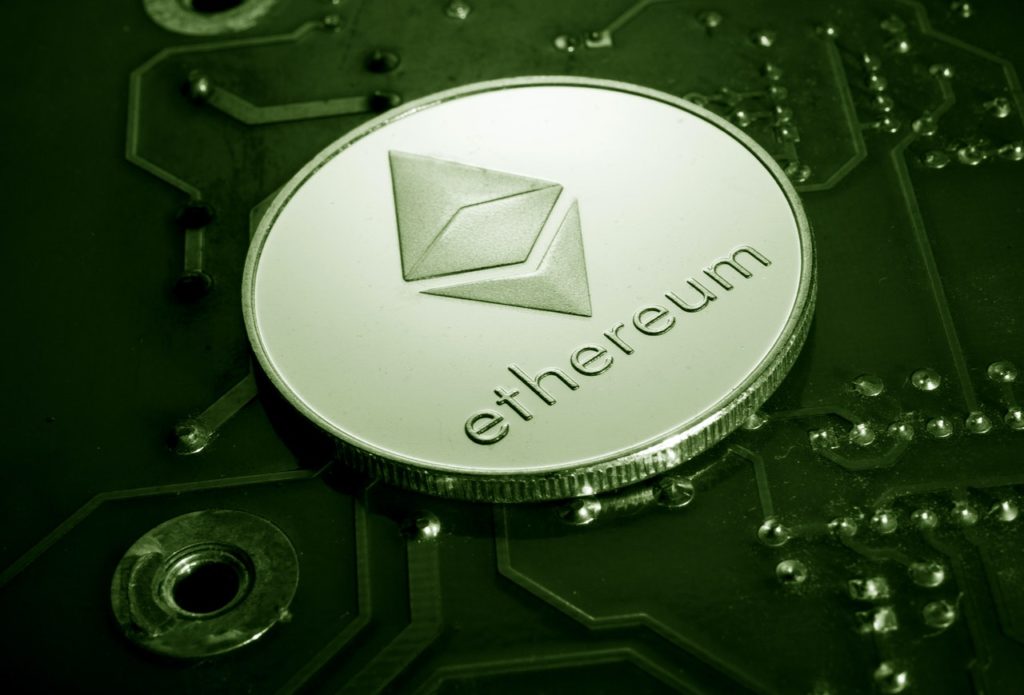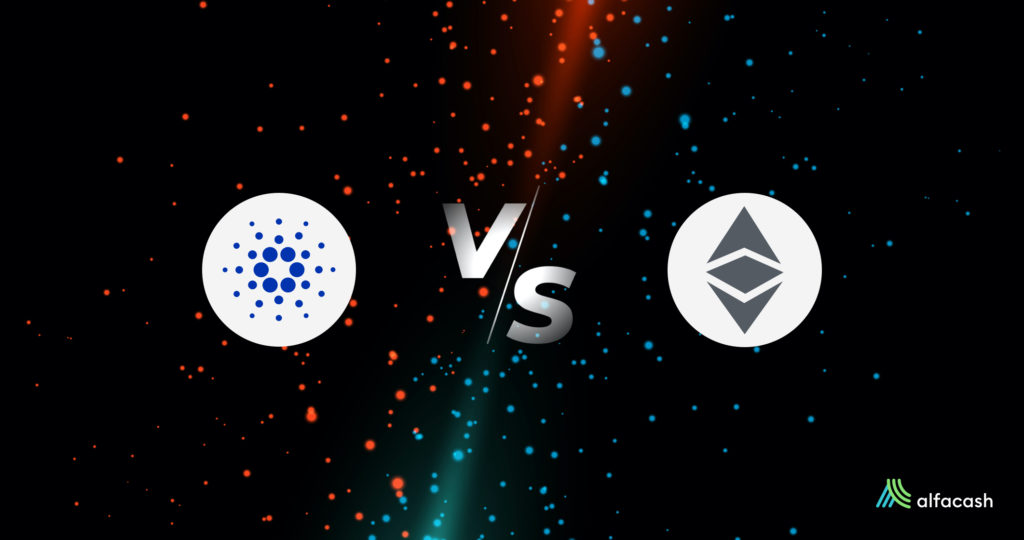Smart contracts. We have smart contracts everywhere inside the cryptocurrencyA digital currency running on a blockchain and built with cryptography. Contrary to central-bank issued currency, cryptocurrency issuance rules are... More world. They work to build a lot of digital tools, so, this isn’t exactly weird. Different (and often numerous) blockchains have this offer for their users, but the leaders so far, per market capitalization, are Ethereum (ETH) and Cardano (ADA).
Cardano has been racing this year to catch up with Ethereum. The latter, on the other side, has been providing for years the infrastructure to make popular applications, such as Initial Coin Offerings (ICOs), Decentralized Finance (DeFi) platforms, and Non-Fungible Tokens (NFTs). None of them are free of some disadvantages, though.
Let’s make a quick comparison between them.
Same origins for Cardano and Ethereum
Not everybody knows this, but Ethereum and Cardano come from the same minds. Two of the Ethereum co-founders created Cardano since they had other ideas for the project. The Ethereum whitepaper was published eight years ago by Vitalik Buterin. But he also had the contribution of other developers, such as Joseph Lubin, Anthony Di Lorio, Gavin Wood, Mihai Alisie, Jeff Wilke, Charles Hoskinson, and Jeremy Wood. The latter two joined forces to create Cardano.

A year before Ethereum’s initial software release in July 2015, Hoskinson stepped away from the project (in June 2014), alleging differences with Vitalik Buterin about Ethereum. Specifically, it was because Hoskinson favored making Ethereum a commercial entity, while Buterin aspired for Ethereum to be a not-for-profit project, according to a Bloomberg report.
In 2015, Hoskinson began the development of Cardano, named after Gerolamo Cardano (an Italian polymath). For this new project, Hoskinson was supported by Jeremy Wood, who also left Ethereum. Finally, in September 2017, the first version of the Cardano software was released. It should be noted that this blockchainBlockchain is a type of database storing an immutable set of data, verifiable to anyone with access to it —through... is the flagship project of IOHK (Input Output Hong Kong), a company formed by both developers.
Features in different languages
Ethereum and Cardano use different high-level programming languages. Ethereum has an internal Turing complete language, dubbed “Solidity” and similar to Python. Meanwhile, Cardano uses Haskell, an ideal language for business logic, data analysis, prototyping, and scalability in existing software environments.
Both of them are the basis for the creation of smart contracts and internal tokens inside these platforms. If we focus on usability, we must know that Cardano and Ethereum —beyond their currencies— were mainly built for developers to create new apps with numerous purposes. We’ve already seen them: ICOs (internal tokens), DeFi apps, NFTs, Decentralized Autonomous Organizations (DAOs), games, and so on.

The great difference with other apps out there (the ones by Google or Microsoft, for example), is the decentralizationThe transfer of control from one central entity to numerous smaller entities. Generally, cryptocurrencies are decentralized. Every crypto transaction is... More. This means that no corporation, government, or group can control or censor these platforms or coins. The users are in control.
That was always the case for Ethereum but is more recent for Cardano. The team of this blockchain is focused on researching, so, its development has been slow and many of its functions are still pending. The arrival of the Shelley phase took place in July 2020, opening the “mining doors” to the whole community. Previously, in the Byron phase, Cardano production was centralized.
Additionally, this same year, Cardano introduced new features: the creation of native tokens and multi-asset support. That includes stablecoins, DeFi assets, and NFTs. Also, this September 12, the update “Alonzo” finally introduced real smart contract capabilities. The competition with Ethereum seems more matched this way.
Different mining and coins
The algorithms for creating new cryptocurrencies in Ethereum and Cardano are different. This means that one uses mining with electricity, and the other doesn’t. Since its inception, Ethereum has employed the Proof-of-Work (PoW) mining algorithm, as has Bitcoin (BTC). This is the one that requires great amounts of energy.
Ethereum native cryptocurrency is called ether (ETH), and it has no maximum issuance limit. Moreover, its supply has increased by 4.5% every year so far. However, the update “London” in August introduced a new system that tends to be more deflationary to reduce the high gas fees. In the current Ethereum system, newly mined ETHs are given as a reward to miners for each new blockA collection of cryptocurrency transactions. Every few minutes (or seconds, depending on the blockchain) one miner or validator verifies the... More added to the network.

Nevertheless, as the Ethereum Foundation mentions, the plan has always been to migrate towards a Proof-of-Stake (PoS) consensus mechanism. In PoS systems, the energy isn’t required and the figure of the “minerMiners secure some blockchain networks by ordering crypto transactions into blocks and verifying the blocks of other miners. For this... More” is replaced by the “validator”. This validator locks a certain amount of coins to gain the right to verify transactions, mint new coins, and receive rewards.
The Ethereum Foundation claims that PoS increases “immunity to centralization”. Although, the opposite can be inferred from the description of this system, as miners would become validators based on the number of cryptocurrencies they hold. Ethereum 2.0 is already in the advanced stages of development, though.
With PoS on Ethereum, only those users with a minimum of 32 ETH (around $106,000) would be eligible to add new blocks to the chain. They’d get about 5.4% passive earnings per year, but they’ll have to wait until Ethereum 2.0 is activated, with their coins currently unavailable.
Beyond Ethereum, in Cardano…
Cardano uses Ouroboros, described as a PoS-style consensus mechanism. According to Cardano.org, Ouroboros is based on participation groups and delegated participation. This consensus mechanism divides the network into epochs and slots. For each slot, a participation group is assigned as a leader and receives a reward in ADA (the native token) for adding new blocks to the chain.

As stated on the Cardano website, through Ouroboros “ADA holders may delegate their stake to a specific stake pool, increasing its chance of being selected as the slot leader, and share in the stake pool’s rewards”.
Contrary to Ethereum, Cardano has a maximum issuance limit of 45 billion ADA, of which 32 billion are already in circulation. Its staked value is over $60.7 million, and its promised yearly reward is around 6.2%.
Speeds and fees
Currently, Ethereum process between 15 and 30 transactions per second, and aims to have a speed of 100,000 transactions per second (TPS) with Ethereum 2.0. Meanwhile, the estimated speed on Cardano is over 250 transactions per second but is aiming to even one million TPS in the future. Both figures are quite superior to the current Visa and Mastercard platforms, which have speeds between 1,700 and 5,000 TPS.
In terms of network fees, Cardano features lower transactionA cryptocurrency transaction is an entry on the blockchain ledger, noting sender, receiver and number of coins transacted. More fees than Ethereum (at least, so far). According to BitInfoCharts, the historical average fee on Ethereum is 0.0056 ETH (around $18.5), while Cardano records an average of 0.51 USD in fees, according to Messari.

Cryptofees website estimates that approximately $35 million in daily fees are generated on Ethereum. Inside this network, the fees are partially burned and partially paid to miners. On Cardano, the total daily fees are estimated to be around $44.500. The fees model is similar to Ethereum: there are no miners here, but users pay the fees to validators.
Additionally, in Ethereum there’s the so-called “gas”, which is necessary to carry out operations with smart contracts. According to Ethereum.org, “gas refers to the unit that measures the amount of computational effort required to execute specific operations on the Ethereum network”.
Gas prices on Ethereum are specified in gwei and are paid with ETH (1 gwei equals 0.000000001 ETH or 10-9 ETH). By the time of writing, this fee is at 70.5 gwei (around $0.0023).
Cardano or Ethereum?
Both of them work to make decentralized applications and smart contracts with different purposes. Both of them aspire to have PoS systems, high speeds, and low fees; and we can say that both of them are still in development. However, Ethereum is the one who takes the lead in the competition (for now).
Ethereum has a total market capitalization of over $397 billion, and it’s the indisputable leader in DeFi applications. According to DeFi Prime, over 90% of DeFi platforms are Ethereum-based. ICOs, NFTs, DAOs, and games have been very numerous as well in this blockchain through all these years.

Meanwhile, Cardano is just starting this journey. The team behind this currency is meticulous, always focused on academic development. But that has taken away all the years of use that Ethereum already has. Even if some hacks are very common in the latter one.
Despite all this, Cardano has gained a lot of popularity and investors in the last two years. Now, with over $81 billion, it’s the third cryptocurrency by market cap; following Ethereum very close. The price of ADA has increased by over 1,370% year-to-date [CoinMarketCap], and several All-Time-Highs (ATHs) have been reached this 2021.
Ethereum is growing as well. The PoS system is closer, and the updates in the middle are promising further improvements. ETH has also surpassed records this year, increasing by over 349% year-to-date. So, which one can you choose? Both of them. Everything depends on what do you want to build and/or what do you want to achieve.
Wanna trade ETH, ADA, and other tokens? You can do it safely on Alfacash! And don’t forget we’re talking about this and a lot of other things on our social media.
Twitter * Telegram * Facebook * Instagram * Youtube * Vkontakte








